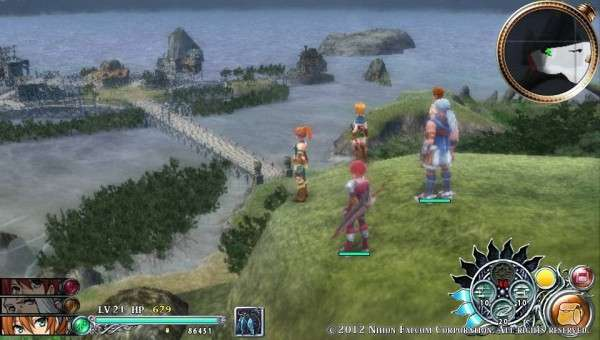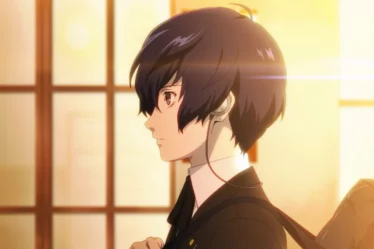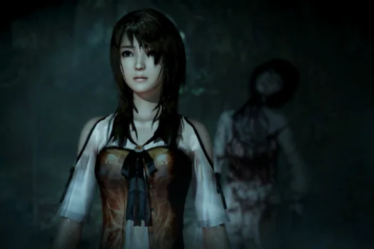
This article was originally published in Italian on Games969.com in 2014.
Ys: Memories of Celceta is essentially a reboot of the fourth installment in the long-running Ys series, a franchise that has been making waves across multiple gaming platforms in Japan since 1987.
Thanks to a significant revival of the brand on Sony consoles and Steam, Falcom has taken the opportunity to reimagine the series, refining its identity while preserving the essence of its origins. With Memories of Celceta, the franchise reaches new heights of excellence without abandoning the core elements that have always defined it. Although developed after the controversial Ys Seven, MoC represents the fourth chapter in Adol Christin’s adventures. It borrows several gameplay mechanics from Ys Seven and adapts them to a game that, numerically speaking, precedes it. The result is a fusion of modern action-RPG elements with the classic role-playing traditions of a bygone era in Japanese gaming.
Adol Christin, the protagonist of the series and this entry, is the quintessential adventurer—always ready to throw himself into a new journey no matter the risks. Once again, Falcom’s red-haired “Link” begins his tale by losing his memory—a well-worn cliché in the genre, yet one that Ys has turned into something of a recurring theme. Sometimes a castaway, other times an amnesiac, Adol finds himself rescuing a group of miners from a monster attack, leading him to accept a task that will set him off on another grand adventure filled with discovery, wonder, and glimpses of his mysterious past. As with most Ys titles, the story doesn’t stand out for its originality, but it serves its purpose well.
Adol’s mission, alongside the companions he gathers in the early hours of the game, is no small feat: mapping the vast, untamed Celceta Forest—a sprawling sea of trees and wilderness that gives the Japanese version of the game its title, Foliage Ocean. Naturally, this dense forest serves as the primary setting for Adol’s journey.
The story in Memories of Celceta is largely incidental, though its supporting cast fits well into the game’s simple yet effective narrative framework, which can be summed up in one word: Adventure.
Now, onto the game’s strongest aspect: the gameplay. This entry represents the best 3D evolution of the Ys series to date. While the narrative takes a backseat, the core experience revolves around exploring vast, uncharted territories, solving simple environmental puzzles, and engaging in fast-paced combat against waves of monsters that fill the forests and dungeons. Many dungeons are tied to optional events that connect back to the main story, gradually unraveling the mystery behind Adol’s amnesia. Far from being a flaw, this approach allows Celceta to weave together complex gameplay mechanics that become increasingly engaging as the adventure progresses.
The real-time battle system requires players to constantly adapt their strategy based on enemy weaknesses, which can be scanned via the touchscreen. Each character has a specific attack type, and it’s up to the player to use this knowledge effectively to overcome fierce battles. Dodging and guarding add surprising depth to combat—well-timed evasions or blocks reward players with stylish slow-motion effects and increased damage opportunities. Special attacks, unique to each hero, are unlocked through grinding and character leveling. These abilities are triggered using button combinations that include the shoulder buttons, though the control scheme occasionally feels a bit clunky, given the console’s ergonomics. Fortunately, players can remap the controls via the options menu, mitigating this minor issue.
Despite what one might assume, Memories of Celceta isn’t just a quick port from PSP to PS Vita. The game fully utilizes the touchscreen in smart ways, allowing for quick access to menus, intuitive navigation, and even touch-based puzzle-solving, where players must reposition and rotate shattered object fragments. Another neat feature involves touching glowing orbs that appear during exploration to recover fragments of Adol’s lost memories while gaining various stat boosts. Rarely has a finger felt so immersive in gameplay! These small implementations serve as a welcome reminder that this is a true PS Vita title, not just a slightly enhanced PSP game.
As is typical of action RPGs with a strong emphasis on exploration, Ys: MoC incorporates several mechanics reminiscent of past titles. Players must use different characters’ unique abilities to solve environmental puzzles and overcome obstacles. Some heroes can pick locks, while others use their long-range attacks to hit distant switches—features that add an extra layer of interactivity.
The game also includes side quests, which can be picked up from traditional request boards in various villages. While this addition might disappoint those who expect RPGs to offer a wealth of optional content, MoC doesn’t go overboard in this regard. Most side quests are simple “fetch” missions—often considered one of the laziest ways to artificially extend an RPG’s playtime. Fortunately, in many cases, players may already have the required items in their inventory, preventing these tasks from feeling like a tedious grind. More than an essential gameplay element, side quests serve as an incentive to collect everything encountered while roaming Celceta’s lush landscapes and mysterious waters.
As mentioned multiple times throughout this analysis, Memories of Celceta doesn’t quite meet the graphical expectations for a PS Vita title. Visually, it isn’t much of an improvement over Ys Seven on PSP, and the character and monster models lack polish. The latter, in particular, often feel generic, and while the protagonist designs retain their classic anime fantasy aesthetic reminiscent of Slayers, even the CG cutscenes fail to impress—especially when compared to Western RPGs backed by high-end animation studios like Ufotable or Production I.G.
On the other hand, the soundtrack is a classic Falcom powerhouse, featuring energetic background tracks that amplify the tension during boss fights. The English voice acting is minimal, limited to brief lines and battle cries, and doesn’t add much depth to the characters. Surprisingly for a NIS America title, the Japanese voice option is absent, though its omission isn’t particularly felt.
Ultimately, Ys: Memories of Celceta is an undeniably fun and engaging game. It’s an excellent entry point for newcomers while still satisfying longtime fans, offering the best 3D representation of the series to date. For anyone looking for an entertaining action RPG without the burden of convoluted Japanese storytelling, Memories of Celceta is a must-play and a standout title for the PS Vita.


